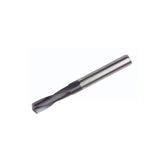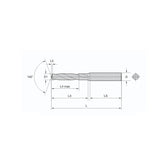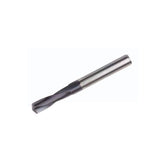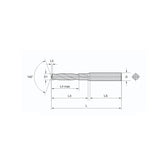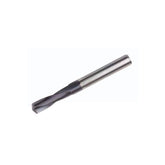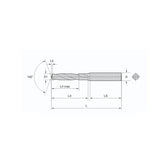Micrometer Head | Multifunctional Embeddable Measuring Tool - Mitutoyo
Micrometer Head | Multi-functional Embeddable Measuring Tool
At first glance, you might find a micrometer head familiar—it looks just like the thimble of a micrometer.

(Micrometer)

(Micrometer Head)
Yes, the micrometer head and the micrometer thimble look identical, but the micrometer head has a wider range of applications. It can be embedded into various mechanical equipment and systems, including machine tools, robots, automated production lines, etc., playing an important role in multi-axis motion and positioning control.
Uses of Micrometer Head
A micrometer head refers to a precision device installed on measuring instruments and precision machinery, widely used for measurement, feeding, positioning, and other purposes.

In recent years, with technological advancements, the application range of micrometer heads has further expanded. They can not only be used in combination with measuring fixtures but also embedded into precision feeding devices, cross-moving stages for laser equipment, manipulators, etc., to achieve measurement, feeding, and positioning functions on multiple axes.

(Left: Schematic of micrometer head on a worktable, Right: Schematic of micrometer head on a lens mount)



(Applications of micrometer heads in various manufacturing scenarios)
Selection Guide
The applications of micrometer heads are very extensive, and customer needs tend to be diverse. Even for standard universal products, micrometer heads come in various models with different measurement ranges, sleeve shapes, overall lengths, etc., allowing you to choose or customize according to your application.

The key points for selecting a micrometer head include measurement range, measuring face, sleeve, scale specifications, thimble size, etc.

(Schematic diagram of the internal structure of a micrometer head)
1. Working Stroke (mm)
Choose a measurement range larger than the anticipated stroke. Standard models offer 6 ranges from 5mm to 50mm.

- If the estimated stroke is only 2mm to 3mm, and if the installation space is sufficient, selecting a 25mm model is more economical.
- For strokes exceeding 50mm, it can be resolved by using them in combination with gauge blocks.

2. Sleeve Shape
The sleeve is the holding part of the micrometer head. Sleeve shapes are divided into "Straight Sleeve Type" and "Type with Lock Nut".


(Straight Sleeve)
The straight sleeve type requires processing such as slit clamping and adhesive bonding, but it has a wide range of applications. During final installation, fine adjustments can be made in the forward and backward directions.

(Sleeve with Lock Nut)
The type with lock nut sleeve has a simpler installation method and can be fixed stably.
Customizable Depending on the installation method and the shape of the installation part, various sleeve shapes are provided.

3. Measuring Face
The measuring face can be divided into types such as flat face, spherical face, anti-rotation device type, etc.


- When used as a measuring device, the flat face type is commonly used.
- When used as a feeding device, the spherical face type minimizes errors caused by tilting of the micrometer head installation part. When the relative positional relationship is unstable and higher precision is required, the anti-rotation device is recommended.
Customizable The end of the micrometer spindle can also be customized into different shapes.

4. Micrometer Spindle Pitch
The micrometer spindle pitch is divided into standard pitch, rapid feed, and fine feed types.

- 0.5mm pitch: Standard type
- 1mm pitch: Rapid feed type, enabling quick positioning and stronger load resistance
- 0.1mm, 0.25mm pitch: Fine feed type, convenient for micro feeding and fine positioning
Customization Tips Can be custom machined to imperial pitches. Inquiries are welcome.
5. Constant Measuring Force Device
When the micrometer head is used as a measuring instrument, "with constant measuring force device" is recommended.
When used as a stopper or when space saving is a priority, consider using the "without constant measuring force device (without ratchet)" type.

(Constant measuring force device)

- When used as a measuring instrument, it is recommended to have a constant measuring force device.
- When used as a stopper or when space saving is a priority, consider using "without constant measuring force device".
Customizable The micrometer head can also be customized with the following locking methods.

6. Locking Device
When using the micrometer head as a stopper, using a micrometer head with a spindle lock can prevent failures due to loosening.

Additionally, by operating the spindle lock, changes in the spindle position can be prevented, allowing for worry-free use.

7. Scale Specifications
When used as a measuring instrument or when the movement amount is specified, attention should be paid to the use scenarios of different scale specifications.


- The scale specification same as that of an outside micrometer is "positive scale", i.e., standard type. The scale value increases in the direction the micrometer spindle retracts. Conversely, the specification where the scale value increases in the direction the micrometer spindle extends is "reverse scale".
- The "positive/reverse scale" specification allows easy reading in both directions, with numbers indicated in black and red respectively, making reading easy and simple.
- Micrometer heads also come with "with counter" and "digital display" types that can directly read measured values. The digital type can also output measurement data for recording and statistical calculation of measured values.

Customization Example Scale processing solutions can be customized according to user requirements.

8. Thimble Outer Diameter
The thimble diameter greatly affects operability and the "fineness" of positioning.

Small diameter thimbles allow fast positioning, while large diameter thimbles allow fine positioning and reading. Large diameter thimbles also include models equipped with speed control devices to improve operability.
Example of Installation with Coupling
The micrometer head can also be designed as a motor coupling that provides driving force to the probe.

